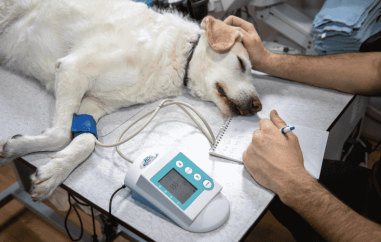Human Papillomavirus (HPV): The Underestimated Danger
 Human Papillomavirus (HPV) is a stealthy threat lurking within our communities, often underestimated in its potential to wreak havoc on public health. Despite its prevalence and potential for serious health complications, HPV remains a topic shrouded in misconceptions and misinformation. In this comprehensive exploration, we uncover the true scope of the HPV epidemic, its associated risks, and the importance of prevention and education in combating this silent menace.
Human Papillomavirus (HPV) is a stealthy threat lurking within our communities, often underestimated in its potential to wreak havoc on public health. Despite its prevalence and potential for serious health complications, HPV remains a topic shrouded in misconceptions and misinformation. In this comprehensive exploration, we uncover the true scope of the HPV epidemic, its associated risks, and the importance of prevention and education in combating this silent menace.
HPV is a group of more than 200 related viruses, transmitted through intimate skin-to-skin contact. While many strains of HPV are harmless and cause no symptoms, others can lead to genital warts and various forms of cancer, including cervical, anal, penile, vaginal, and throat cancers. Of particular concern is HPV's association with cervical cancer, which is the fourth most common cancer among women globally.
HPV is incredibly common, with the majority of sexually active individuals contracting the virus at some point in their lives. According to the World Health Organization (WHO), approximately 80% of sexually active people will acquire HPV by the age of 50. Despite its ubiquity, the majority of HPV infections resolve on their own without causing any symptoms or health problems. However, for some individuals, persistent infection with high-risk HPV strains can lead to the development of cancerous lesions over time.
The Role of Vaccination
Vaccination represents a powerful tool in the fight against HPV-related diseases. The HPV vaccine, introduced in the early 2000s, offers protection against the most common high-risk HPV strains responsible for cervical cancer, as well as certain low-risk strains that cause genital warts. By vaccinating individuals before they become sexually active, the vaccine can significantly reduce the risk of HPV infection and its associated health consequences.
Despite the proven effectiveness of the HPV vaccine, vaccination rates remain suboptimal in many regions around the world. Misinformation and misconceptions surrounding the vaccine's safety and efficacy have contributed to hesitancy among parents and healthcare providers. Efforts to improve vaccine education and access are critical in increasing vaccination rates and preventing HPV-related diseases.
Screening and Early Detection
In addition to vaccination, regular screening for HPV-related cancers is essential for early detection and treatment. Cervical cancer screening, typically performed through Pap smears or HPV DNA tests, can detect precancerous changes in the cervix before they progress to invasive cancer. Early detection allows for timely intervention and improved outcomes for patients.
Addressing Disparities in Access and Awareness
While HPV affects individuals of all genders and socioeconomic backgrounds, certain populations face disproportionate barriers to prevention and care. Marginalized communities, including low-income individuals, racial and ethnic minorities, and LGBTQ+ individuals, often experience limited access to healthcare services and education about HPV and its associated risks. Addressing these disparities requires a multifaceted approach that includes improved access to healthcare, culturally competent education and outreach efforts, and targeted interventions to increase vaccination rates and screening uptake among underserved populations.
The Importance of Education and Awareness
Education and awareness are paramount in the fight against HPV. By dispelling myths and misconceptions, promoting vaccination and screening, and empowering individuals to take charge of their sexual health, we can work towards a future free from HPV-related diseases. Comprehensive sex education programs that provide accurate information about HPV, consent, and contraception are essential in equipping individuals with the knowledge and skills they need to make informed decisions about their health and well-being.
Human Papillomavirus represents a significant public health challenge, with far-reaching implications for individuals, families, and communities worldwide. By increasing vaccination rates, improving access to screening and treatment, and fostering open and honest conversations about sexual health, we can turn the tide against HPV and its associated diseases. Together, we can raise awareness, promote prevention, and ultimately, save lives.
Image by Fernando Zhiminaicela from Pixabay









































